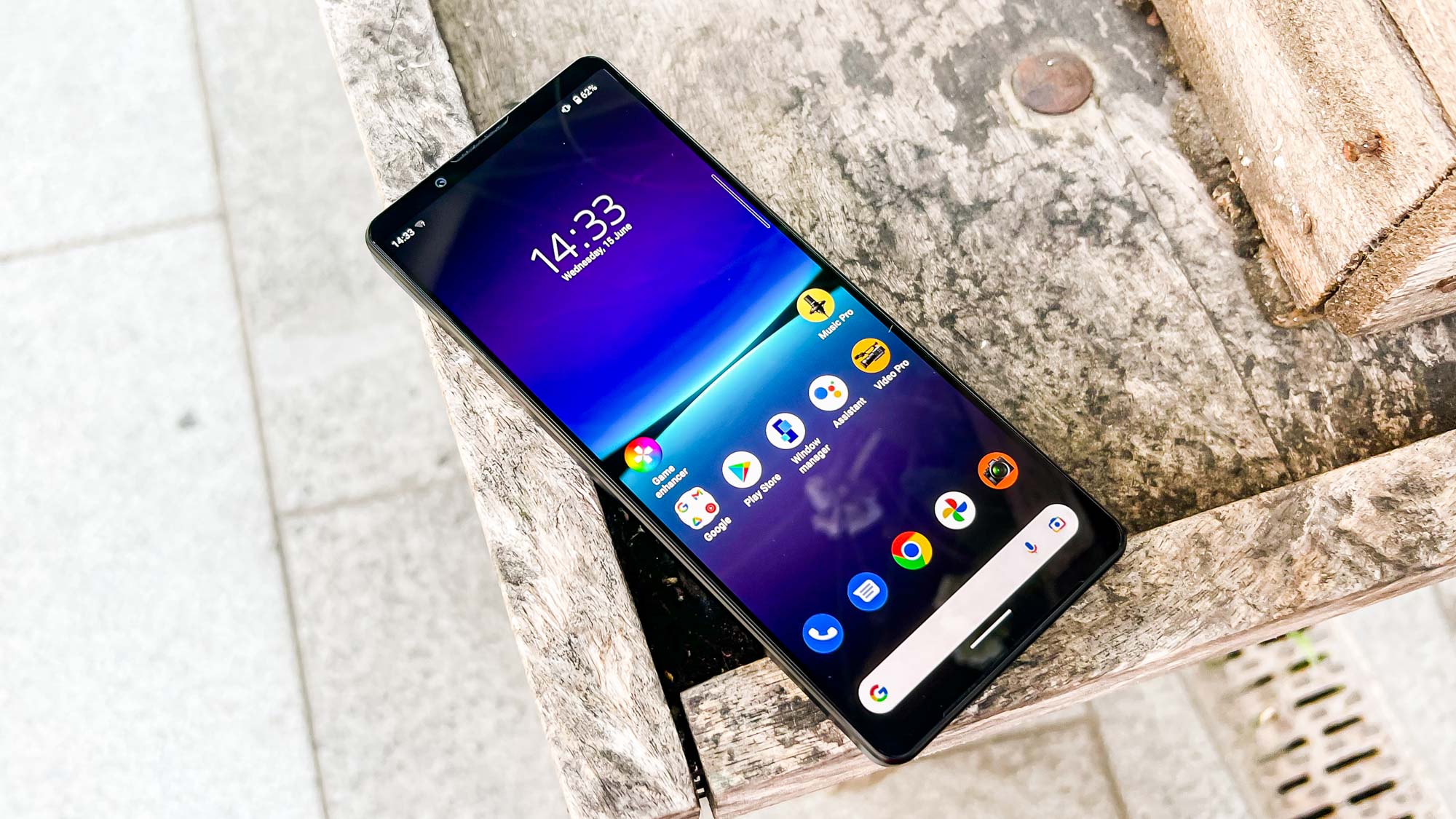Tom's Guide Verdict
The Xperia 1 iV's advanced and intricate creativity features will justify the high price of admission for a small group of people. While features like the detailed display or variable zoom telephoto camera have more mainstream appeal, they're not enough by themselves to justify picking it over a Galaxy S22 Ultra, Google Pixel 6 Pro or iPhone 13 Pro Max.
Pros
- +
Highly adjustable photo/video apps
- +
Variable telephoto camera
- +
Detailed display with excellent speakers
- +
Unique design with microSD card and headphone jack
Cons
- -
Very expensive
- -
Not available in the U.S. until September
- -
Unreliable fingerprint reader
Why you can trust Tom's Guide
Price: £1,299/$1,599
Display: 6.5-inch 4K OLED (3840 x 1644)
Refresh rate: Adaptive 120Hz
Rear cameras: 12MP main (f/1.7), 12MP ultrawide (f/2.2), 12MP 3.5 - 5.2x optical telephoto (f/2.3 - 2.8)
Front camera: 12MP
Chipset: Snapdragon 8 Gen 1
RAM: 12GB
Storage: 256GB/512GB, expandable with microSD up to 1TB
Battery: 5,000 mAh
Charging: 30W wired/15W wireless
Water/dust resistance: IP68/IP65
Size: 6.5 x 2.8 x 0.32 inches (165 x 71 x 8.2 mm)
Weight: 6.5 ounces (185 grams)
The Sony Xperia 1 IV is a paradox. The latest phone from Sony comes with many excellent qualities but also an incredibly long list of potential negatives. It offers amazing potential value but is also unbelievably expensive. It's smart, but somehow can't get some of the basics of phone functionality right.
Aimed at enthusiasts of all stripes,the Xperia 1 IV is designed by Sony to effectively replace part of your usual gear loadout, be that a still or video camera, a portable games console or even a portable recording set-up. But stuffing that much into one phone has also ballooned the price. Even worse for U.S. users, you can't actually buy it yet, though the phone will eventually make it to the states.
This Sony Xperia 1 IV review will take you through the extreme highs and lows of this phone. Most people will wind up avoiding the Xperia 1 IV in favor of a more typical device off the best phones list. But others may be the right person with the right needs and the big budget required to enjoy this Xperia's enormous potential.
Sony Xperia 1 IV review: Price and availability
You can buy the Sony Xperia 1 IV right now in the U.K., but the phone doesn't go on sale in the U.S. until September 1.
At £1,299/$1,599, the Xperia 1 IV costs £200 more than an iPhone 13 Pro Max and £150 more than a Galaxy S22 Ultra for potential British buyers. And the $1,599 price in the U.S. looks even worse for American buyers, since that's the same price as the top-tier 1TB iPhone 13 Pro Max or S22 Ultra. Plus by the time it launches, we'll almost be ready for the iPhone 14 series to arrive, and the iPhone 14 Pro models which rival the Xperia are looking to gain a whole lot of upgrades.
In return for that high price, the Xperia comes with 256GB storage by default in the U.K. and 512GB in the U.S., You may be significantly poorer for buying this phone, but at least you'll get a good amount of storage for the price.
Sony Xperia 1 IV review: Design
I've described phones in the past as monolithic, but I think Sony's Xperia 1 IV takes the prize for being the most like the imposing structures from 2001: A Space Odyssey. The phone is much taller and narrower than comparable 6.5-inch handsets to better fit widescreen content. It's also a fair bit lighter, so the Xperi 1 IV is very comfortable to hold and use with one hand, even with its flat sides, for a long period of time.
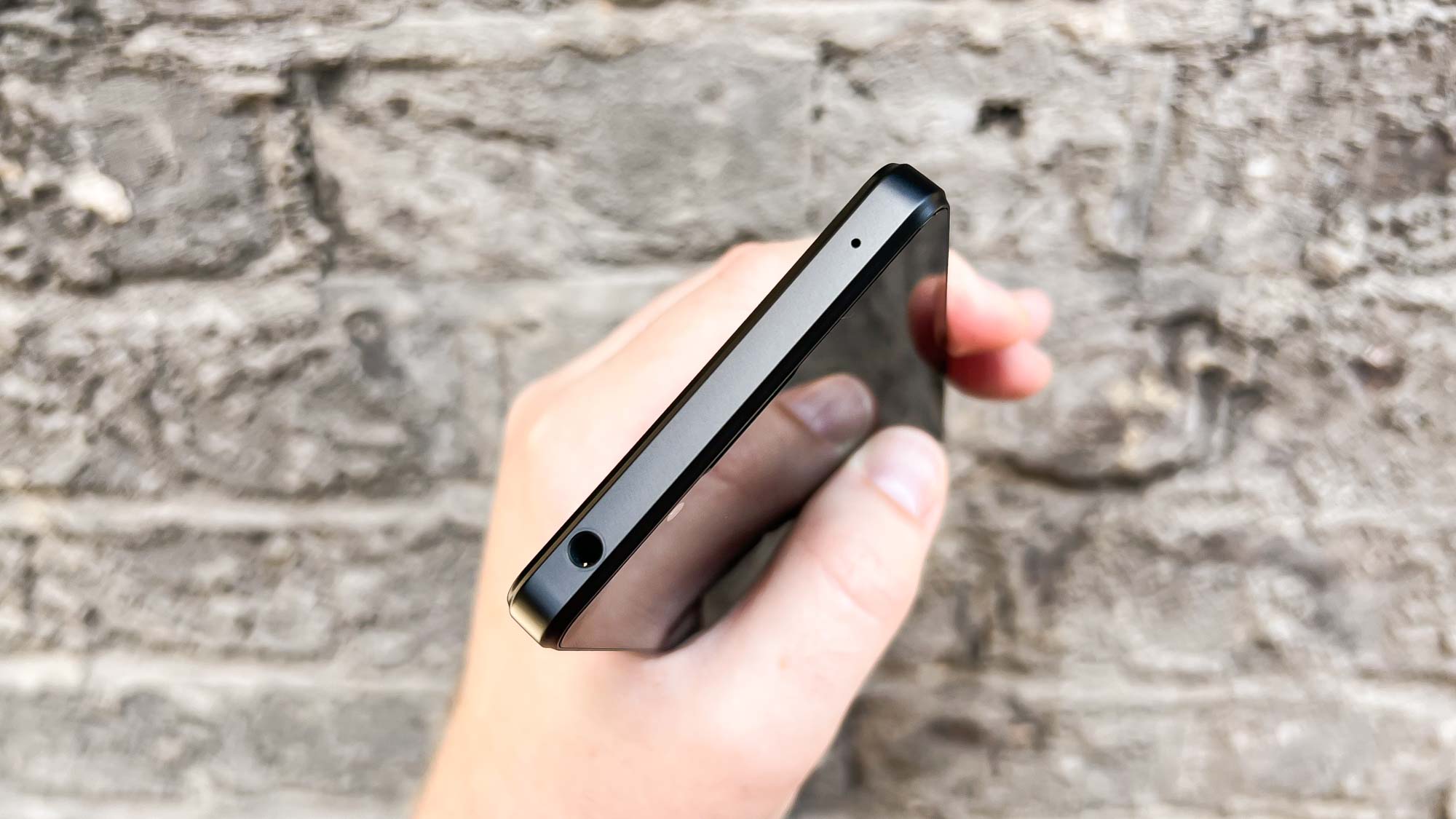
A lot of features you thought you may never see again on a flagship phone are present on the Xperia 1 IV, for better or worse. There's a headphone jack, a notification light and a SIM/SD card tray you can remove without needing a SIM tool. You also get a separate camera shutter button to make taking photos easier when you're holding the phone sideways.
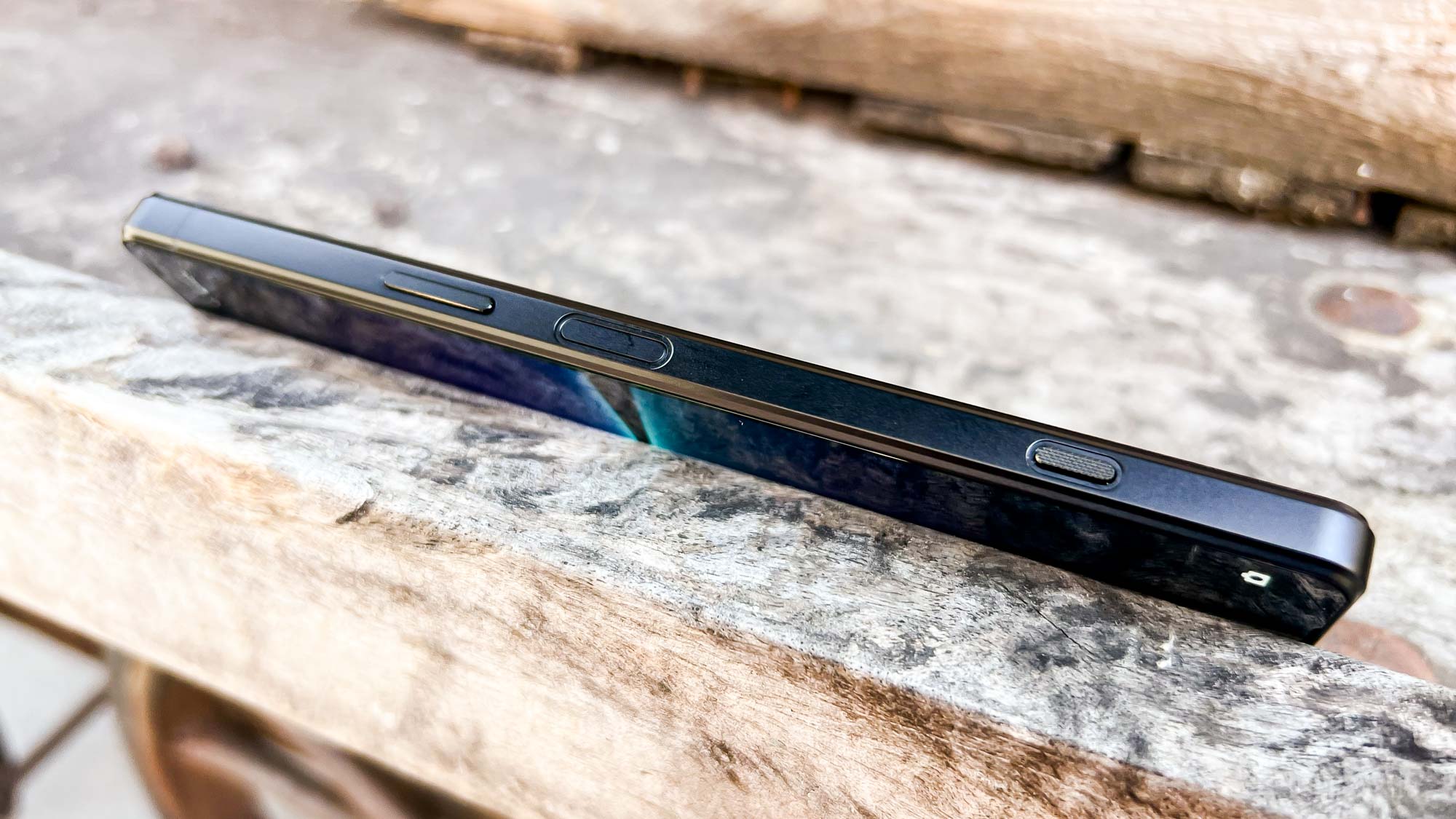
If that wasn't over-the-top enough, Sony's been generous enough to get the Xperia 1 IV rated for water/dust resistance twice, with the phone qualifying as both IP65 (against water jets) and IP68 (against immersion in water). No need to worry about using this phone in the pouring rain then.
The power button acts as your fingerprint unlocking mechanism too, but for whatever reason I really found it difficult to operate reliably. I normally like this as a feature just as much as facial recognition or under-display scanners, but here it regularly fails to detect my thumbprint. Given how much else this phone's capable of, I'm surprised Sony managed to mess this fairly simple part up.
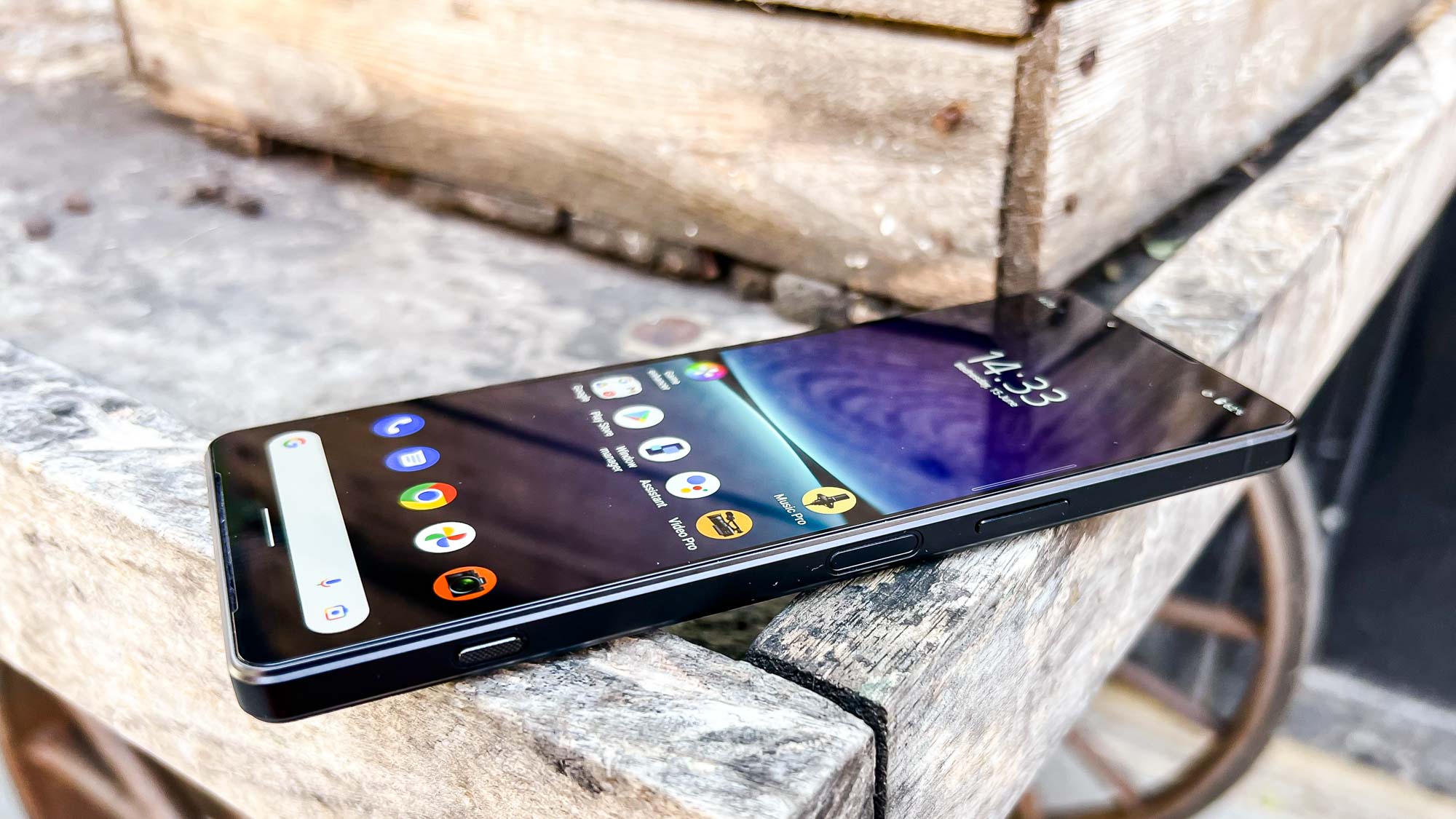
Sony's been generous enough to offer three colors, unlike previous Xperia phones. Your options are black, white and purple.
Sony Xperia 1 IV review: Display and speakers
Once you get over the strange aspect ratio, the Xperia's 6.5-inch screen is enjoyable to watch and play games on. With a 4K resolution and a 120Hz adaptive refresh rate, you have everything you need to enjoy your content.
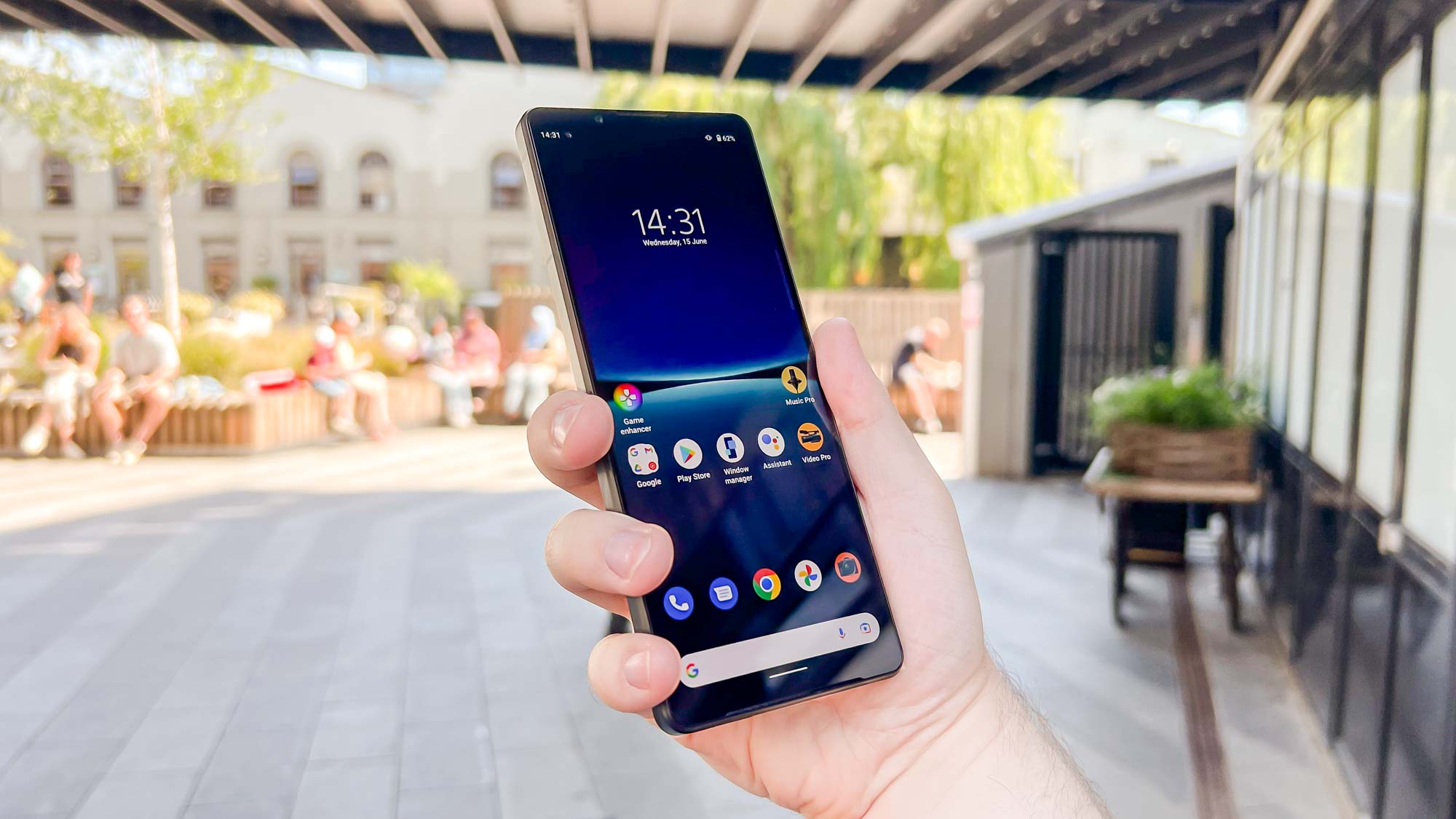
The Xperia display's sharpness rivals that of the Galaxy S22 Ultra and iPhone 13 Pro Max, and offers a color temperature somewhere between the two by default, which helped both the darker dramatic scenes and the brighter action set-pieces of the Uncharted movie look excellent.
The only downside is that the screen feels hemmed in due to the chunky top and bottom bezels. This means there's no camera punch-hole or parts of your hand getting in the way of the action, but it's still a design that makes the phone look a few years older than it actually is.
Everything sounds better coming from the Sony phone, thanks to well-balanced audio that outshines many smartphones. After testing some songs on the Xperia and the iPhone 13 Pro Max (including The Only Thing I Know For Real from Metal Gear Rising: Revengeance), I still think the iPhone is better, but Sony's now taken the No. 2 spot in terms of smartphone sound quality.
Sony Xperia 1 IV review: Cameras
Whether you like it or not, photography on the Xperia is informed by Sony's Alpha camera series design. I test a lot of different phones and phone camera systems, and I've not come across anything quite like Sony's offering.
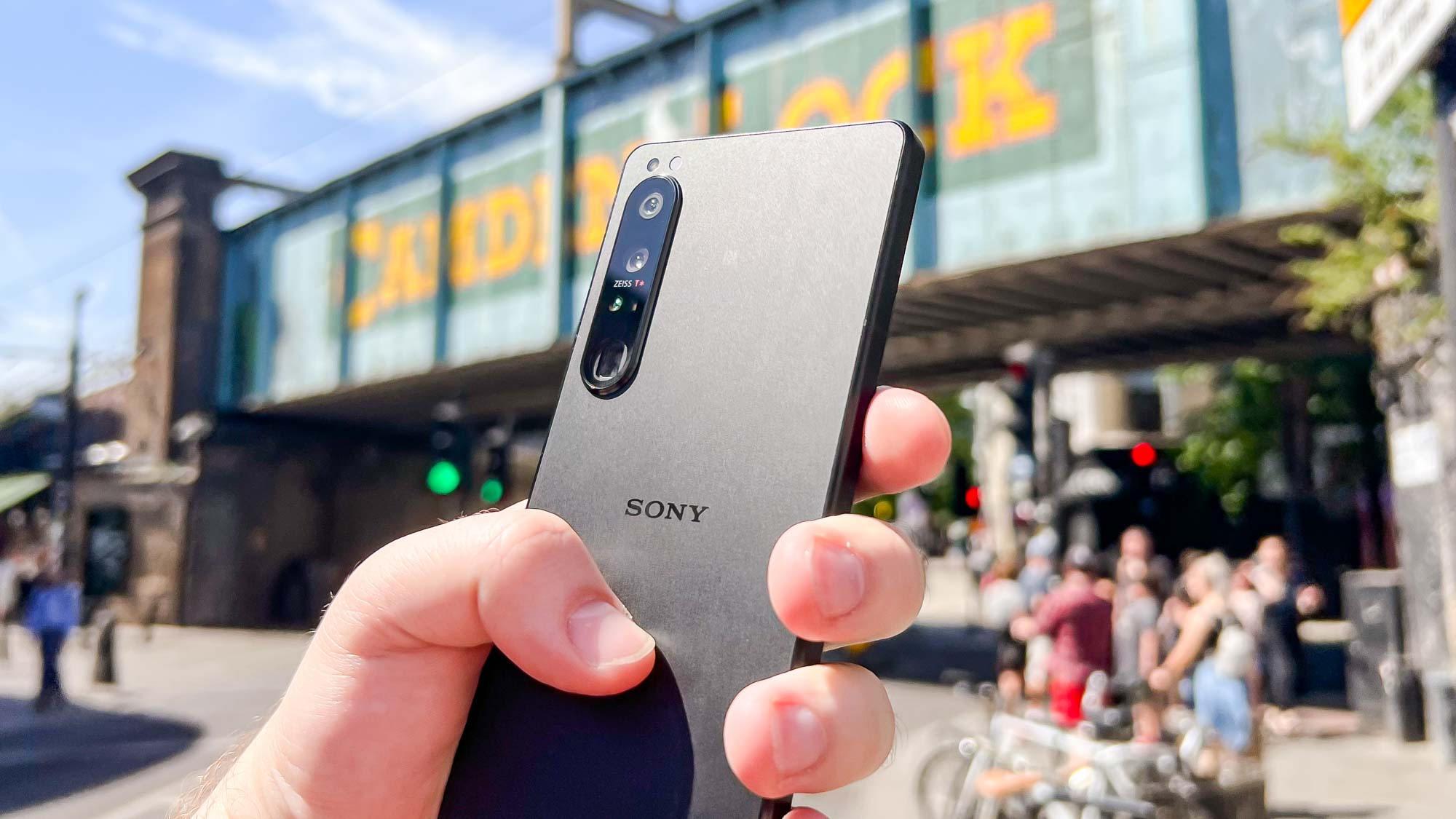
Let's start with the hardware though. All four sensors on the Xperia 1 IV — three on the back and one on the front — are 12MP in resolution. The rear camera array is made up of a main camera, an ultrawide angle lens and, arguably the centerpiece, s variable zoom telephoto lens that can seamlessly move from 3.5x to 5.2x zoom as you capture photos or video.
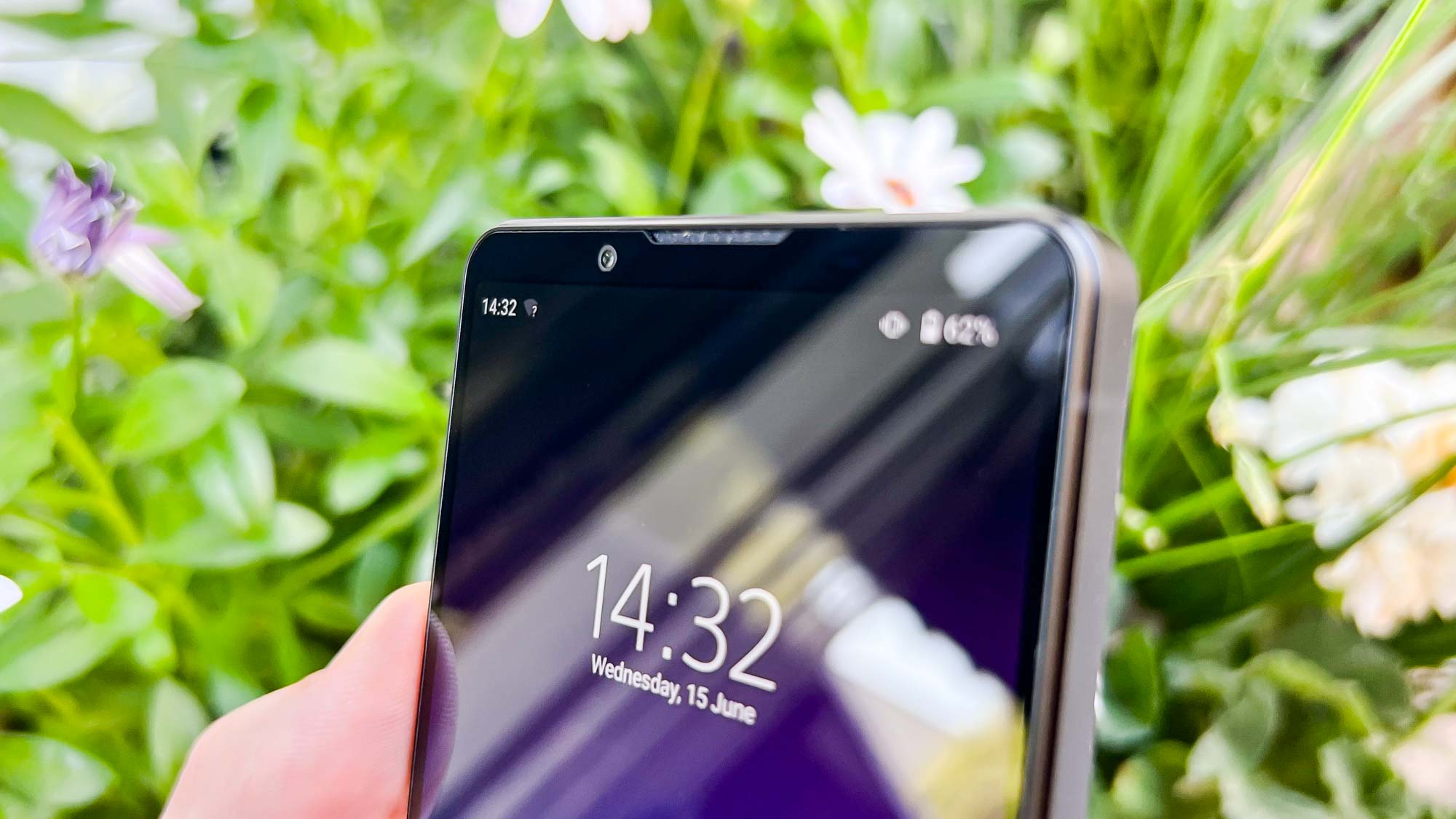
Let's first compare a main camera shot from the Xperia and the iPhone 13 Pro Max. In this shot of All Saints Church in Tufnell Park, the iPhone's image pops more with highlights like the pointing between the bricks being much more obvious. The Sony matches it for color richness, but its photo is far flatter.
Here's a second shot I took using the main cameras on the Xperia and the Galaxy S22 Ultra, looking over Hawley Lock on Regent's Canal. These two images are fairly similar, but the Samsung's is a touch brighter and cooler, which helps bring out detail in the buildings on either side of the canal.
Sticking with the Sony and Samsung, we have here an ultrawide camera shot of a railway arch in the center of Camden Gardens park. The Xperia, as well as having a higher 0.7x magnification than the Galaxy's 0.6x, produces a much darker image once again. Here, that's to the Xperia’s advantage, making the tunnel look closer to how it did on the day. I do appreciate the extra detail in the brickwork and graffiti that you see in the Galaxy S22 Ultra photo, though.
To test the telephoto camera, I tried to focus on an Egyptian goose I found perching on some stonework in the middle of Regent's Canal, again using the Galaxy S22 Ultra and the Xperia. There's much more detail to see in the Samsung's image, even though its basic zoom of 3x isn't as powerful as the 3.5x lens in the Sony camera; it also uses a slightly lower 10MP resolution to Sony's 12MP.
I tried taking this shot at 3/3.5x (above), 5.2x and 10x magnification to cover all the magnifications available on these phones.
The Samsung's 10x image above was far sharper than the Sony's. This is what you'd expect given it has a dedicated camera for this magnification, rather than having to rely on digital zoom like the Xperia.
The Sony took a better image at 5.2x, its own maximum native zoom, even if it still wasn't too sharp taken by itself.
The Xperia has one extra trick up its sleeve here — adjustable optical zoom. Just like a regular camera, you can change the magnification of the telephoto camera with a slider on-screen, meaning you don't lose out on image quality by not taking an image at the precise right zoom level. It's unfortunate that the range is quite limited, only from 3.7x to 5.2x zoom, but it adds an extra layer of freedom when shooting objects that aren't too far away.
Lastly for the rear cameras, I took some nighttime photos looking over the junction near Tufnell Park Underground Station. In this Xperia vs. iPhone 13 Pro Max shot, we see that the Xperia does a great job keeping the scene dark while details remain sharp, even though it doesn't have a dedicated night mode like most phones. The brighter iPhone image also comes with increased bloom from the street lamps and car headlamps, which spoil the look of the image for me.
For the selfie portrait, I had to turn the incredibly aggressive face smoothing from the Sony down to zero before I got a shot that I liked the look of. Even then, it's not a great shot of me. It's still much softer, and I don't think the coloring quite matches up to how good the iPhone's is.
I took all of these photos in the Photography Pro app's Basic mode, which is the most similar mode available to regular smartphone photography apps. However, you can enable other modes, or use the Cinema Pro or Video Pro apps that open up a huge number of options for users who know what they're doing with things like focus areas, ISO and white balance for still shots and video.
I have praised Samsung's similar Expert RAW app for the Galaxy S22, but this is another level entirely that will definitely appeal to seasoned photographers and videographers. It also could help level the playing field with the iPhone 13 Pro Max, Galaxy S22 Ultra and the other best camera phones if you know what you're doing.
Sony Xperia 1 IV review: Performance
Sony gave the Xperia the best possible start for performance on an Android phone by giving it this year’s leading Qualcomm chip, the Snapdragon 8 Gen 1, plus 12GB RAM. (Qualcomm has subsequently come out with the Snapdragon 8 Plus Gen 1 variant, so there will be more powerful Android phones out there than the Xperia 1 IV.)
After playing Grid Autosport, my favorite racing game, on the Sony phone, the Xperia 1 IV seemed to deliver a similar level of performance to other Android phones I've tried in terms of graphical fidelity and smoothness. However, as we can see in the table of test results below, the Xperia lags behind the iPhone 13 Pro Max on all counts, and behind the Galaxy S22 Ultra on two out of four tests on synthetic benchmarks.
Of particular note are the faster than average Adobe Premiere Rush times compared to both the Galaxy S22 Ultra and other Android phones. It would make sense for Sony to focus on speeding up the Xperia's video encoding given the phone's target market of content creators, even if it can't match the iPhone's raw power.
| Row 0 - Cell 0 | Sony Xperia 1 IV | Samsung Galaxy S22 Ultra | iPhone 13 Pro Max |
| Geekbench 5 (single core/multi-core) | 1,229/3,469 | 1,240/3,392 | 1,720/4,549 |
| 3DMark Wild Life Unlimited (score/fps) | 9,835/58.9 | 9,499/56.9 | 11,418/68.4 |
| 3DMark Wild Life Extreme Unlimited (score/fps) | 1,850/11.1 | 2,346/14.0 | 2,584/15.8 |
| Adobe Premiere Rush encoding (mins:secs) | 0:42 | 0:47 | 0:25 |
For storage, you get either 256GB if you're in the U.K., or 512GB if you're in the U.S. That's more than you get by default with any other phone, which helps offset the Xperia’s cost a little.
If you want even more space or the ability to easily transfer data between different devices, Sony’s phone offers a microSD card slot in the SIM tray, with support for up to another terabyte of space. The SIM tray is also easily removable with just a fingernail (while still being watertight), which makes it incredibly convenient to switch between multiple SD cards if you're filling them up with all your photos and video.
Sony Xperia 1 IV review: Battery and charging
The Xperia 1 IV comes with a well-sized 5,000 mAh battery, but after two hours watching YouTube over Wi-Fi, the battery life had dropped by 22%. That's greater power consumption than the other phones I've tested using this method such as the Honor Magic4 Pro, which only lost 10% charge over two and a half hours.
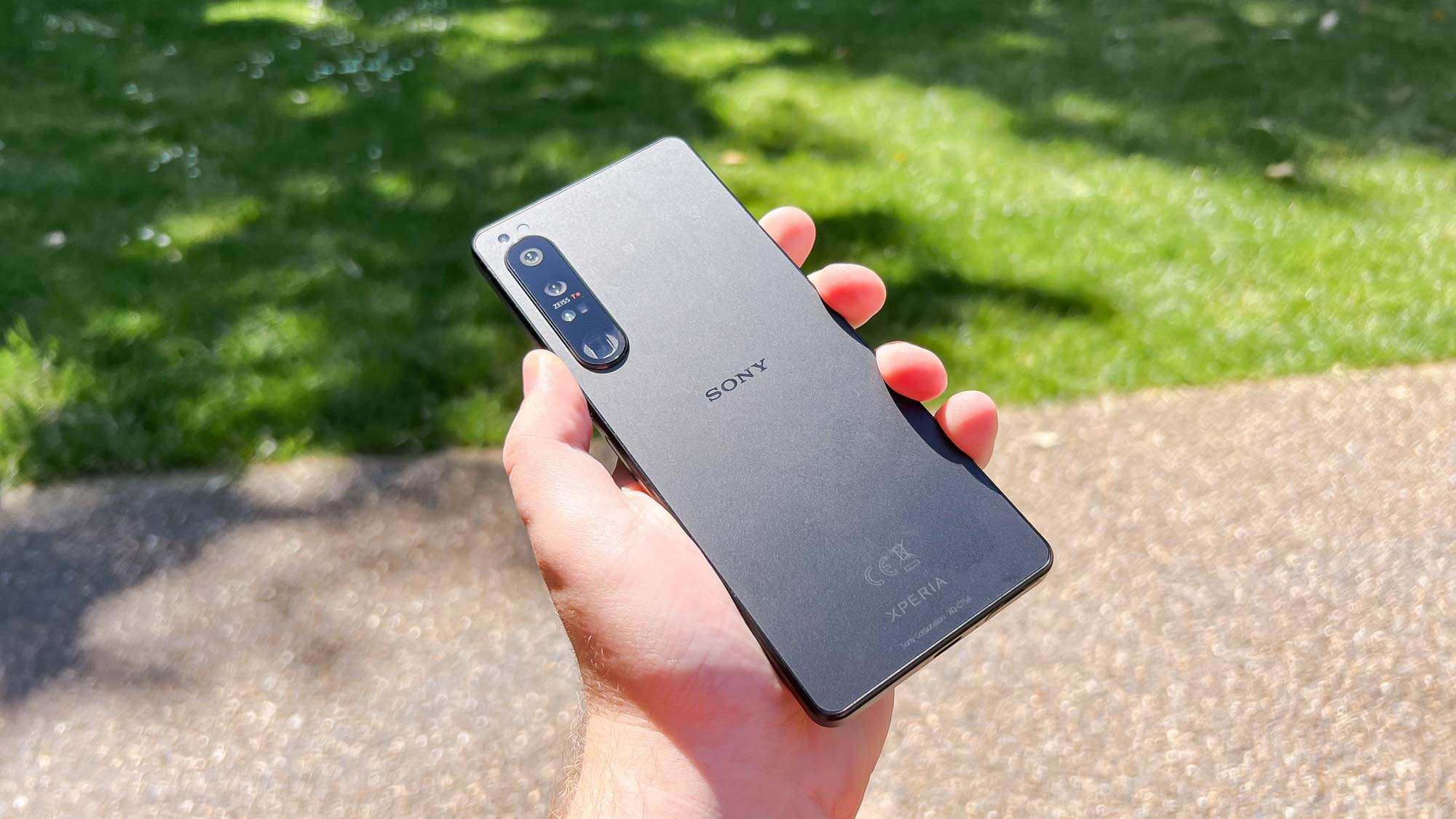
Battery drain on the Xperia 1 IV likely has to do with the phone’s high display resolution. I imagine if you're using the phone for less power-hungry purposes over the course of the day as well, you'll easily make it home at night with power to spare if you charged the phone fully that morning.
The Xperia's charging is harder to grade since Sony provides neither a charger nor a cable in the box. If you go for Sony's own 30W fast charger, you can get 50% charge in 30 minutes according to the company's estimates, which is acceptably fast for most users. Unfortunately, the charger will set you back another £50.
Sony Xperia 1 IV review: Software
Much of the Xperia's interface, based on Android 12, looks like stock Android, which should suit most users. What you're less likely to enjoy are all the extra apps Sony's loaded onto the phone.
Some of these are cool like the Cinema Pro, Video Pro and Music Pro apps for more detailed video and audio recording, the PlayStation App and Headphones App for connectivity with your PlayStation and Sony headphones/earbuds, but other additions like Netflix and Bravia Core streaming apps, a couple of Amazon apps plus social media like Facebook and LinkedIn seem unnecessary.
One unique ability that Sony added to its version of Android are the multi-window and pop-up window ability which lets you split two apps or open a popover window for multitasking. I love using these windows on tablets, and having them at my disposal on my phone can prove equally useful if you need to cross-reference some details without swapping back and forth using the normal app switcher.
Sony Xperia 1 IV review: Verdict
Sony made the Xperia 1 IV for a very specific audience of professional or amateur creators who are happy to pay the extra over regular flagship phones for a device with camera features you won't find anywhere else. And that's why the phone's most unique abilities, like the telephoto camera, display and unique design choices are also the best parts of the Xperia 1 IV experience.
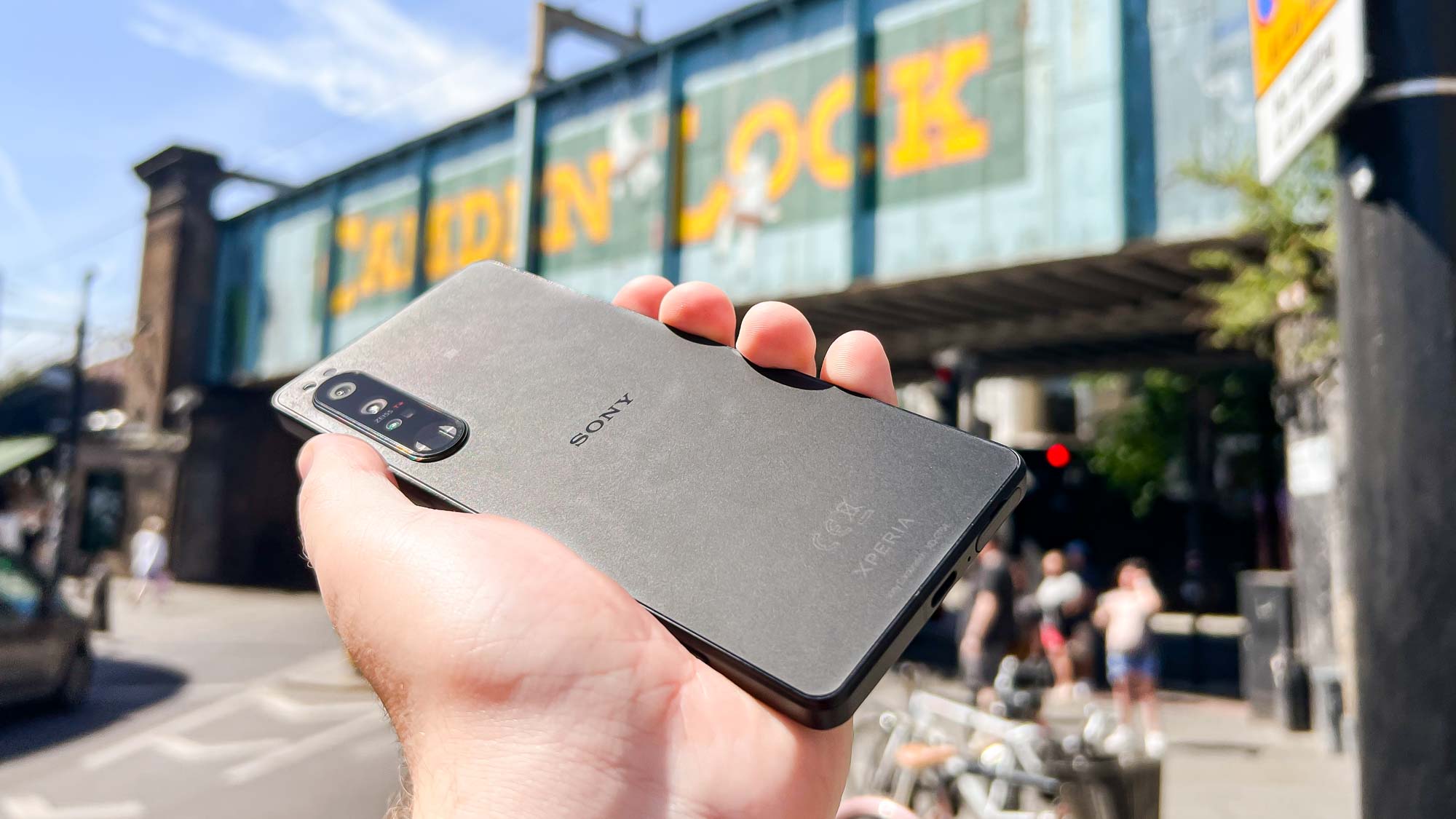
If these advanced hardware and software abilities don't interest you, this definitely isn't the phone for you. Not only will you pay far too much, but things like the weak battery life or the fingerprint sensor will drive you mad without any upside.
Anyone with this much money to spend on an Android phone is probably better off selecting a Galaxy S22 Ultra, or a Galaxy S22 Plus or maybe even a Google Pixel 6 Pro if you want a similarly large and powerful phone with a bit of money left over. These are more conventional devices that take a lot of creative control away from the user but maybe that's what's right for you. We're not all photography or cinematic geniuses who can get the most out of the Xperia's pro apps.
On the other hand, if you like the sound of the creativity features you can get with the Sony but don't have the money for it, you've still got options. An S22 Plus or S22 Ultra with Expert RAW and Pro Video enabled, or an iPhone 13 or iPhone 13 Pro with its Photographic Styles, ProRAW/ProRes and Cinematic Mode will give you some extra toys to play with when shooting, while hopefully remaining in your budget. Plus you can buy these right now, instead of having to wait a few months if you're a U.S. buyer.

Richard is based in London, covering news, reviews and how-tos for phones, tablets, gaming, and whatever else people need advice on. Following on from his MA in Magazine Journalism at the University of Sheffield, he's also written for WIRED U.K., The Register and Creative Bloq. When not at work, he's likely thinking about how to brew the perfect cup of specialty coffee.
